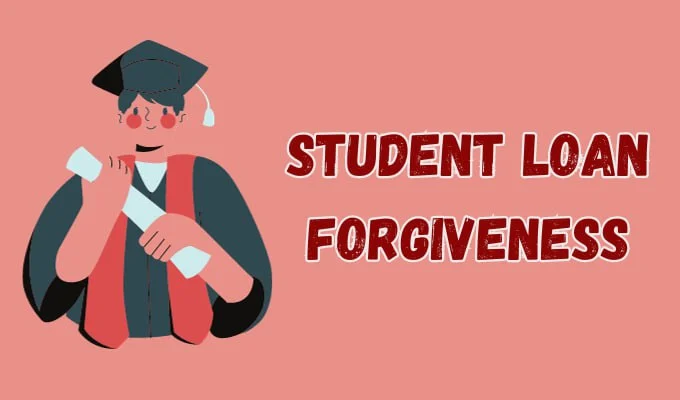Last Updated on 6 months by sonnysuman
Introduction
The weight of student loan debt remains a major financial obstacle for many people in today’s fast-paced society. The forgiveness of student loans is still a contentious issue, and there may soon be adjustments and modifications. You’ve come to the correct spot whether you’re having trouble paying off your student loans or want to learn about the most recent advancements. We will discuss the current state of student loan forgiveness in this blog article, along with the information you need to be prepared.
Comprehending the Pardon of Student Loans
The Fundamentals
Gaining an understanding of the basics of student loan forgiveness is essential before exploring the most recent developments. A government program called student loan forgiveness allows borrowers to discharge all or part of their student loan debt under certain guidelines. It’s crucial to remember that qualifying requirements can change and that these programs are subject to modification.
Types of forgiveness for student loans
1. Loan forgiveness for public service (PSLF)
PSLF is intended for people who work in government. Your outstanding student loan balance may be waived if you work for the government or a nonprofit organization and make 120 eligible payments.
2. Repayment Based on Income (IDR) Pardoning
Repayment options that are governed by your income cap your monthly payments according to your family size and income. The remaining amount may be forgiven after making regular payments for twenty to twenty-five years, depending on the plan.
3. Repayment of Teacher Loans
After five years of service, teachers employed by educational assistance agencies or low-income schools may be eligible for loan forgiveness of up to $17,500.
Current Progress
News About Federal Loan Forgiveness
The landscape of student loan forgiveness has been updated on multiple occasions by the federal government. Here are some significant advancements to note:
1. Temporary Delay in Paying Back Federal Student Loans
Federal student loan payments were temporarily suspended during the COVID-19 outbreak. This policy was originally scheduled to expire, but the government repeatedly prolonged it. It’s crucial to keep yourself updated on the situation, though, as these suspensions might not last forever.
2. Possible Modifications to PSLF
Expanding eligibility and streamlining the Public Service Loan Forgiveness program have been discussed. Employees of the public sector may find it simpler to be eligible for forgiveness under the proposed amendments.
3. Income-Related Adjustments to Repayment
In an effort to make income-driven repayment programs easier for borrowers to handle, the government has been looking into methods to streamline and enhance them.
State-Level Projects
Some states are stepping up to offer their own student loan forgiveness programs in addition to federal ones. These initiatives frequently focus on particular sectors of the economy or entice people to reside and work in underprivileged areas.
Important Things to Remember
Remaining Acquired
The situation surrounding student loan forgiveness is ever-changing. It’s important to keep up with changes to policies, application processes, and qualifying requirements. For updates, frequently visit legitimate financial news sources and official government websites.
Consolidating Debt
Consider combining all of your federal student loans into one Direct Consolidation Loan if you have more than one. This can streamline your payback procedure and qualify you for some forgiveness programs.
Looking for Expert Advice
It might be intimidating to navigate the complicated realm of student loan forgiveness. If you’re not sure if you qualify for a certain program or not, you should think about talking to a financial advisor or student loan specialist.
Conclusion
In conclusion, student loan forgiveness is still a hot topic in 2023. It is imperative for borrowers to be up to date on any modifications or changes that may be in the works. Knowing the qualifying standards is essential, regardless of whether you’re thinking about a state-specific effort, an income-driven repayment plan, or the Public Service Loan Forgiveness program.
Forgiveness of student loans is not a one-size-fits-all answer, but it can offer significant relief. Make wise choices depending on your financial objectives and unique situation. Remember that controlling your student loan debt requires both sound financial management and careful planning. Staying informed and considering your options will help you move closer to becoming debt-free in the future.

